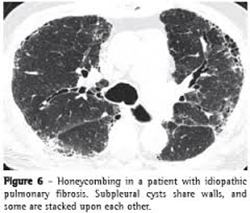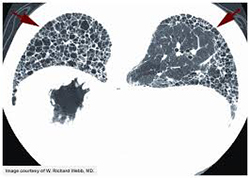Interstitial Lung Disease (ILD)
🫁 Interstitial Lung Disease (ILD)
Interstitial Lung Disease (ILD) refers to a group of more than 300 lung conditions that cause inflammation and scarring (fibrosis) of the lung tissue. While most ILDs are rare, the more common types include:
Idiopathic Pulmonary Fibrosis (IPF)
Sarcoidosis
Non-Specific Interstitial Pneumonia (NSIP)
Extrinsic Allergic Alveolitis (Hypersensitivity Pneumonitis)
ILD associated with Connective Tissue Disease
Pneumoconiosis
Drug-induced Interstitial Lung Disease

Some ILDs—especially sarcoidosis—may also affect other organs in the body.
📊 Prevalence & Classification
Research on ILD prevalence is complex, as many cases lack a specific diagnosis. However, it is estimated that Idiopathic Pulmonary Fibrosis (IPF) and Sarcoidosis together account for around 50% of ILD cases.
ILDs are typically classified into:
Diseases with a known cause
Diseases with unknown origin
⚠️ Symptoms of Interstitial Lung Disease
Symptoms usually develop gradually and may include:
Shortness of breath (especially during exertion)
Dry, persistent cough
Fatigue and decreased exercise tolerance
Cyanosis (blue/purple discoloration of lips, fingers, toes)
Clubbing (swelling of fingers)
🧬 Causes of ILD

Only about 1 in 3 ILD cases has a known cause. The disease often results from a combination of genetics and environmental factors. Key causes include:
🌫️ Environmental or Occupational Exposure:
Pneumoconiosis: Due to inhalation of harmful particles like:
Silica dust (Silicosis)
Coal dust (Coal Worker’s Pneumoconiosis)
Asbestos (Asbestosis)
🐦 Organic Allergens:
Extrinsic Allergic Alveolitis: Triggered by inhaled organic agents like:
Mouldy hay (Farmer’s Lung)
Bird droppings/feathers (Bird Fancier’s Lung)
💊 Drug-Induced ILD:
Certain medications can lead to ILD, including:
Amiodarone – for arrhythmia
Bleomycin – a chemotherapy drug
Methotrexate – used for arthritis
Nitrofurantoin – for UTIs
🔐 Prevention of ILD
Prevention is possible only when the cause is known. The best method is to avoid exposure to known environmental or occupational risk factors.
In the future, experts hope to identify genetic markers to predict ILD risk and tailor prevention strategies individually.
🩺 Diagnostic Tests & Investigations
Essential ILD investigations include:
Chest X-rays and High-Resolution CT (HRCT) Scans: Reveal patterns like:
Fine nodules
Net-like haziness
‘Honeycombing’ in advanced fibrosis
Lung Function Tests:
Spirometry
Diffusion Capacity Testing
6-Minute Walk Test (6MWT)
Oxygen Saturation
🧪 Lung Biopsy:
Sometimes required for accurate diagnosis, though less common now due to advanced imaging techniques.
💊 ILD Treatment Options
Treatment depends on the ILD type and disease progression:
Anti-fibrotic drugs and anti-inflammatory medications are commonly used.
More effective in sarcoidosis, hypersensitivity pneumonitis, and rare ILDs.
Limited effect in idiopathic pulmonary fibrosis (IPF).
Oxygen therapy and pulmonary rehabilitation may be needed in advanced stages.
Lung transplantation is considered when ILD progresses despite treatment.
📈 ILD Prognosis & Survival
Survival rates vary by ILD type:
Idiopathic Pulmonary Fibrosis: ~20% survive beyond 5 years post-diagnosis
Sarcoidosis / Hypersensitivity Pneumonitis: 80–100% 5-year survival
Ready to get our medical care? We’re always wait for serve you, Make an Appointment.
Appointment
Our Pricing Packages
- Neurology Care
- Medical Care
- Child & Old Care
- Dental Care
- On-Time Delivery
- Neurology Care
- Medical Care
- Child & Old Care
- Dental Care
- On-Time Delivery
- Neurology Care
- Medical Care
- Child & Old Care
- Dental Care
- On-Time Delivery
